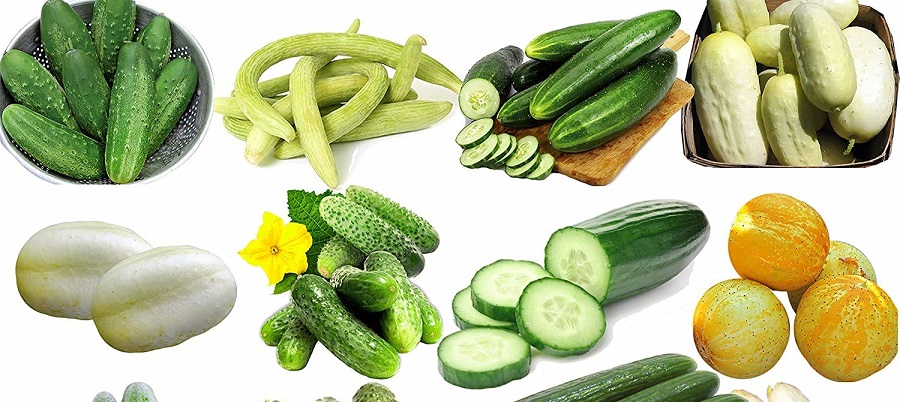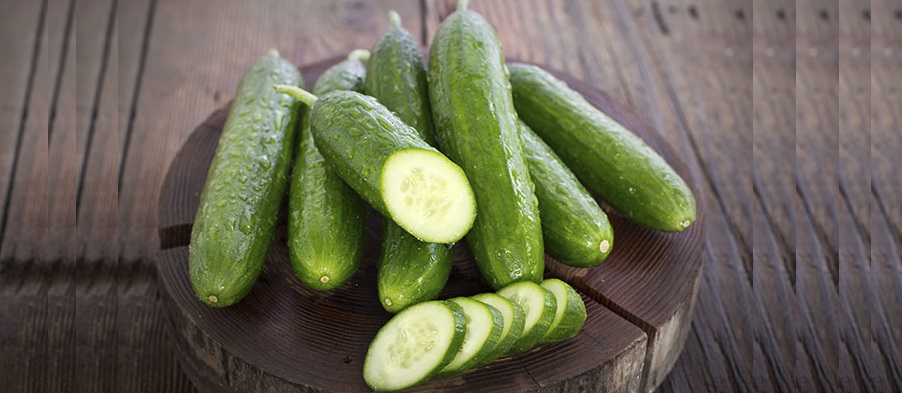How many varieties of cucumbers are there, and what are some of the most common types?
There are many varieties of cucumbers, but some of the most common types include the following:
- English cucumbers
- Persian cucumbers
- Pickling cucumbers
- Slicing cucumbers
- Lemon cucumbers
- Armenian cucumbers
- Kirby cucumbers
- Burpless cucumbers
- Long and thin cucumbers
- Short and chubby cucumbers.
What is the difference between slicing cucumbers and pickling cucumbers, and what are some of their unique characteristics?
Slicing cucumbers and pickling cucumbers are two common types of cucumbers that are used for different purposes. Slicing cucumbers, also known as English cucumbers, are longer and thinner with a dark green, smooth skin. They are usually eaten raw and are great for salads or sandwiches because of their mild flavor and low seed content. Pickling cucumbers, on the other hand, are smaller and thicker with bumpy skin. They have a more sour taste and are ideal for pickling or fermenting to make pickles. Pickling cucumbers also have more seeds and a crunchier texture than slicing cucumbers.
What are English or European cucumbers, and how do they differ from other cucumber varieties?
English or European cucumbers are a type of cucumber that is longer and thinner than traditional slicing cucumbers. They are usually seedless, with a smoother skin and a milder, sweeter taste. Unlike other cucumber varieties, English cucumbers are often sold wrapped in plastic to protect their delicate skin. They are often used in salads, sandwiches, and as a garnish, and are popular in European and Mediterranean cuisine.
How do lemon cucumbers differ from traditional green cucumbers, and what are some common uses for this variety?
Lemon cucumbers, also known as yellow cucumbers, have a round shape and a bright yellow color when ripe, which is different from the traditional green cucumber's oblong shape and green color. Lemon cucumbers have a sweeter, less bitter flavor compared to traditional cucumbers. They also have thinner skin and a softer texture. Lemon cucumbers are often used in salads, as a garnish, or in dishes where their unique flavor can shine. They can also be eaten raw or pickled.
What are Armenian cucumbers, and how are they traditionally used in Mediterranean and Middle Eastern cuisine?
Armenian cucumbers, also known as snake melons, are a type of long, slender cucumber with a thin, light green skin and pale, crisp flesh. Unlike other cucumber varieties, Armenian cucumbers are usually eaten when they are more mature, and the seeds have started to develop. They have a mild, sweet flavor and a slightly nutty taste, and their texture is often described as crunchy and refreshing.
In Mediterranean and Middle Eastern cuisine, Armenian cucumbers are used in a variety of dishes, including salads, soups, and pickles. They are often sliced thinly and added to sandwiches and wraps or served with dips like hummus and tzatziki. In some cultures, the seeds of Armenian cucumbers are removed and used to make a refreshing, cooling beverage. Additionally, Armenian cucumbers are a popular choice for making quick pickles due to their thin skin and mild flavor.
What is the difference between greenhouse-grown and field-grown cucumbers, and how does this affect their flavor and texture?
Greenhouse-grown and field-grown cucumbers differ in the way they are cultivated, which can affect their flavor and texture. Greenhouse cucumbers are grown in a controlled environment, typically in a hydroponic system, and are protected from the elements. This means that they can be grown year-round and are often more uniform in size and shape. They may also be sweeter and more tender than field-grown cucumbers. Field-grown cucumbers, on the other hand, are grown outdoors in soil and are subject to the changing weather conditions. This can result in more variation in size and shape, and they may be firmer and slightly bitter. However, some people prefer the flavor of field-grown cucumbers, as they can have a more complex taste due to the influence of the soil and climate.
How do burpless cucumbers differ from other varieties, and what are some benefits of choosing this type?
Burpless cucumbers, also known as seedless cucumbers, have thinner skin and smaller seeds than traditional cucumbers. This results in a less bitter taste and a more tender texture. As the name suggests, burpless cucumbers are less likely to cause digestive discomfort or "burping" after consumption. They are also typically longer and straighter than traditional cucumbers. Some benefits of choosing burpless cucumbers include their lower bitterness and seed content, which can make them more appealing to those who find traditional cucumbers too strong in flavor. They are also a good source of hydration and nutrients, such as vitamin K and potassium.
What are gherkin cucumbers, and how are they typically used in pickling and preserving?
Gherkin cucumbers, also known as West Indian gherkins or burr cucumbers, are a small, spiky variety of cucumber that are commonly used in pickling and preserving. They are different from traditional pickling cucumbers in that they are smaller, have a rough, spiky exterior, and are slightly sweeter in flavor. Gherkins are typically harvested when they are young and small, and are often pickled in vinegar or brine to preserve their crisp texture and tangy flavor. They are a popular ingredient in sandwiches, salads, and relishes, and are also commonly used in Indian and Caribbean cuisine.
What are Persian cucumbers, and what unique flavor and texture characteristics do they offer?
Persian cucumbers are small, seedless cucumbers that are often used in Middle Eastern and Mediterranean cuisine. They are similar in appearance to English cucumbers, but smaller in size, with a thin, tender skin and crisp flesh. Persian cucumbers have a delicate flavor that is less bitter and more sweet than other cucumber varieties, and they also have a slightly crunchy texture. They are often eaten raw in salads or as a refreshing snack, and are also commonly used in pickling and preserving. Additionally, their small size makes them ideal for use in sandwiches and appetizers.
How can different types of cucumbers be used in salads, sandwiches, and other recipes to add flavor and nutrition?
Different types of cucumbers can be used in a variety of ways in recipes to add flavor and nutrition. Here are some ideas:
- Slicing cucumbers can be added to salads or sliced and used as a topping on sandwiches or burgers.
- Pickling cucumbers are great for making pickles and can also be added to salads or sandwiches.
- English or European cucumbers can be sliced and used in salads or as a garnish for cocktails.
- Lemon cucumbers are great for adding a unique flavor to salads and can also be sliced and used as a garnish.
- Armenian cucumbers can be used in Mediterranean or Middle Eastern dishes, such as tzatziki sauce or fattoush salad.
- Burpless cucumbers are great for slicing and adding to salads or sandwiches, as they have a mild and sweet flavor.
- Gherkin cucumbers are perfect for making pickles or used as a garnish for cocktails.
- Persian cucumbers can be sliced and used in salads or as a topping on tacos or wraps.
- Cucumber can also be blended with yogurt or herbs to make a refreshing dip or sauce.
- Cucumber can be juiced or added to smoothies for a hydrating and nutritious drink.


